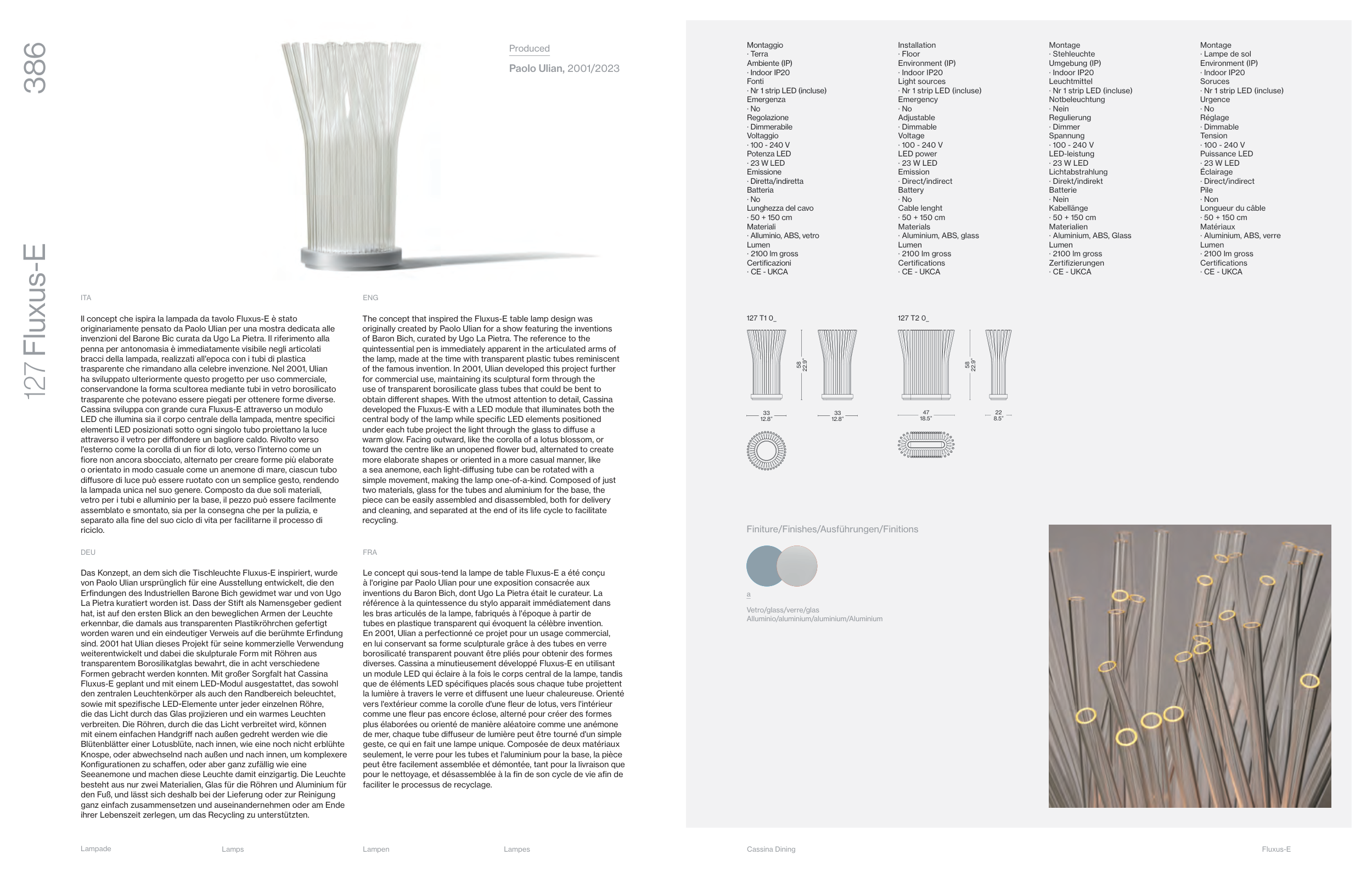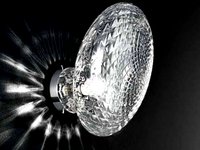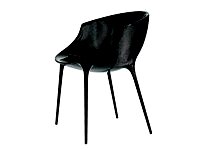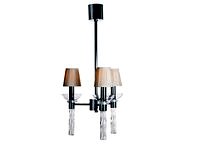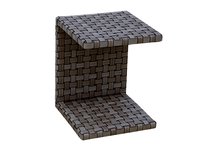Fluxus-E
Cassina Dining
386
387
Lampes
Lampen
Lamps
Lampade
Montaggio
· Terra
Ambiente (IP)
· Indoor IP20
Fonti
· Nr 1 strip LED (incluse)
Emergenza
· No
Regolazione
· Dimmerabile
Voltaggio
· 100 - 240 V
Potenza LED
· 23 W LED
Emissione
· Diretta/indiretta
Batteria
· No
Lunghezza del cavo
· 50 + 150 cm
Materiali
· Alluminio, ABS, vetro
Lumen
· 2100 lm gross
Certificazioni
· CE - UKCA
Montage
· Stehleuchte
Umgebung (IP)
· Indoor IP20
Leuchtmittel
· Nr 1 strip LED (incluse)
Notbeleuchtung
· Nein
Regulierung
· Dimmer
Spannung
· 100 - 240 V
LED-leistung
· 23 W LED
Lichtabstrahlung
· Direkt/indirekt
Batterie
· Nein
Kabellänge
· 50 + 150 cm
Materialien
· Aluminium, ABS, Glass
Lumen
· 2100 lm gross
Zertifizierungen
· CE - UKCA
Installation
· Floor
Environment (IP)
· Indoor IP20
Light sources
· Nr 1 strip LED (incluse)
Emergency
· No
Adjustable
· Dimmable
Voltage
· 100 - 240 V
LED power
· 23 W LED
Emission
· Direct/indirect
Battery
· No
Cable lenght
· 50 + 150 cm
Materials
· Aluminium, ABS, glass
Lumen
· 2100 lm gross
Certifications
· CE - UKCA
Montage
· Lampe de sol
Environment (IP)
· Indoor IP20
Soruces
· Nr 1 strip LED (incluse)
Urgence
· No
Réglage
· Dimmable
Tension
· 100 - 240 V
Puissance LED
· 23 W LED
Éclairage
· Direct/indirect
Pile
· Non
Longueur du câble
· 50 + 150 cm
Matériaux
· Aluminium, ABS, verre
Lumen
· 2100 lm gross
Certifications
· CE - UKCA
127 Fluxus-E
Produced
Paolo Ulian, 2001/2023
Il concept che ispira la lampada da tavolo Fluxus-E è stato
originariamente pensato da Paolo Ulian per una mostra dedicata alle
invenzioni del Barone Bic curata da Ugo La Pietra. Il riferimento alla
penna per antonomasia è immediatamente visibile negli articolati
bracci della lampada, realizzati all'epoca con i tubi di plastica
trasparente che rimandano alla celebre invenzione. Nel 2001, Ulian
ha sviluppato ulteriormente questo progetto per uso commerciale,
conservandone la forma scultorea mediante tubi in vetro borosilicato
trasparente che potevano essere piegati per ottenere forme diverse.
Cassina sviluppa con grande cura Fluxus-E attraverso un modulo
LED che illumina sia il corpo centrale della lampada, mentre specifici
elementi LED posizionati sotto ogni singolo tubo proiettano la luce
attraverso il vetro per diffondere un bagliore caldo. Rivolto verso
l'esterno come la corolla di un fior di loto, verso l'interno come un
fiore non ancora sbocciato, alternato per creare forme più elaborate
o orientato in modo casuale come un anemone di mare, ciascun tubo
diffusore di luce può essere ruotato con un semplice gesto, rendendo
la lampada unica nel suo genere. Composto da due soli materiali,
vetro per i tubi e alluminio per la base, il pezzo può essere facilmente
assemblato e smontato, sia per la consegna che per la pulizia, e
separato alla fine del suo ciclo di vita per facilitarne il processo di
riciclo.
The concept that inspired the Fluxus-E table lamp design was
originally created by Paolo Ulian for a show featuring the inventions
of Baron Bich, curated by Ugo La Pietra. The reference to the
quintessential pen is immediately apparent in the articulated arms of
the lamp, made at the time with transparent plastic tubes reminiscent
of the famous invention. In 2001, Ulian developed this project further
for commercial use, maintaining its sculptural form through the
use of transparent borosilicate glass tubes that could be bent to
obtain different shapes. With the utmost attention to detail, Cassina
developed the Fluxus-E with a LED module that illuminates both the
central body of the lamp while specific LED elements positioned
under each tube project the light through the glass to diffuse a
warm glow. Facing outward, like the corolla of a lotus blossom, or
toward the centre like an unopened flower bud, alternated to create
more elaborate shapes or oriented in a more casual manner, like
a sea anemone, each light-diffusing tube can be rotated with a
simple movement, making the lamp one-of-a-kind. Composed of just
two materials, glass for the tubes and aluminium for the base, the
piece can be easily assembled and disassembled, both for delivery
and cleaning, and separated at the end of its life cycle to facilitate
recycling.
Das Konzept, an dem sich die Tischleuchte Fluxus-E inspiriert, wurde
von Paolo Ulian ursprünglich für eine Ausstellung entwickelt, die den
Erfindungen des Industriellen Barone Bich gewidmet war und von Ugo
La Pietra kuratiert worden ist. Dass der Stift als Namensgeber gedient
hat, ist auf den ersten Blick an den beweglichen Armen der Leuchte
erkennbar, die damals aus transparenten Plastikröhrchen gefertigt
worden waren und ein eindeutiger Verweis auf die berühmte Erfindung
sind. 2001 hat Ulian dieses Projekt für seine kommerzielle Verwendung
weiterentwickelt und dabei die skulpturale Form mit Röhren aus
transparentem Borosilikatglas bewahrt, die in acht verschiedene
Formen gebracht werden konnten. Mit großer Sorgfalt hat Cassina
Fluxus-E geplant und mit einem LED-Modul ausgestattet, das sowohl
den zentralen Leuchtenkörper als auch den Randbereich beleuchtet,
sowie mit spezifische LED-Elemente unter jeder einzelnen Röhre,
die das Licht durch das Glas projizieren und ein warmes Leuchten
verbreiten. Die Röhren, durch die das Licht verbreitet wird, können
mit einem einfachen Handgriff nach außen gedreht werden wie die
Blütenblätter einer Lotusblüte, nach innen, wie eine noch nicht erblühte
Knospe, oder abwechselnd nach außen und nach innen, um komplexere
Konfigurationen zu schaffen, oder aber ganz zufällig wie eine
Seeanemone und machen diese Leuchte damit einzigartig. Die Leuchte
besteht aus nur zwei Materialien, Glas für die Röhren und Aluminium für
den Fuß, und lässt sich deshalb bei der Lieferung oder zur Reinigung
ganz einfach zusammensetzen und auseinandernehmen oder am Ende
ihrer Lebenszeit zerlegen, um das Recycling zu unterstützten.
Le concept qui sous-tend la lampe de table Fluxus-E a été conçu
à l'origine par Paolo Ulian pour une exposition consacrée aux
inventions du Baron Bich, dont Ugo La Pietra était le curateur. La
référence à la quintessence du stylo apparait immédiatement dans
les bras articulés de la lampe, fabriqués à l'époque à partir de
tubes en plastique transparent qui évoquent la célèbre invention.
En 2001, Ulian a perfectionné ce projet pour un usage commercial,
en lui conservant sa forme sculpturale grâce à des tubes en verre
borosilicaté transparent pouvant être pliés pour obtenir des formes
diverses. Cassina a minutieusement développé Fluxus-E en utilisant
un module LED qui éclaire à la fois le corps central de la lampe, tandis
que de éléments LED spécifiques placés sous chaque tube projettent
la lumière à travers le verre et diffusent une lueur chaleureuse. Orienté
vers l'extérieur comme la corolle d'une fleur de lotus, vers l'intérieur
comme une fleur pas encore éclose, alterné pour créer des formes
plus élaborées ou orienté de manière aléatoire comme une anémone
de mer, chaque tube diffuseur de lumière peut être tourné d'un simple
geste, ce qui en fait une lampe unique. Composée de deux matériaux
seulement, le verre pour les tubes et l'aluminium pour la base, la pièce
peut être facilement assemblée et démontée, tant pour la livraison que
pour le nettoyage, et désassemblée à la fin de son cycle de vie afin de
faciliter le processus de recyclage.
ITA
ENG
DEU
FRA
Finiture/Finishes/Ausführungen/Finitions
Vetro/glass/verre/glas
Alluminio/aluminium/aluminium/Aluminium
a
127 T1 0_
127 T2 0_
33
12.8”
33
12.8”
58
22.9”
47
18.5”
58
22.9”
22
8.5”


